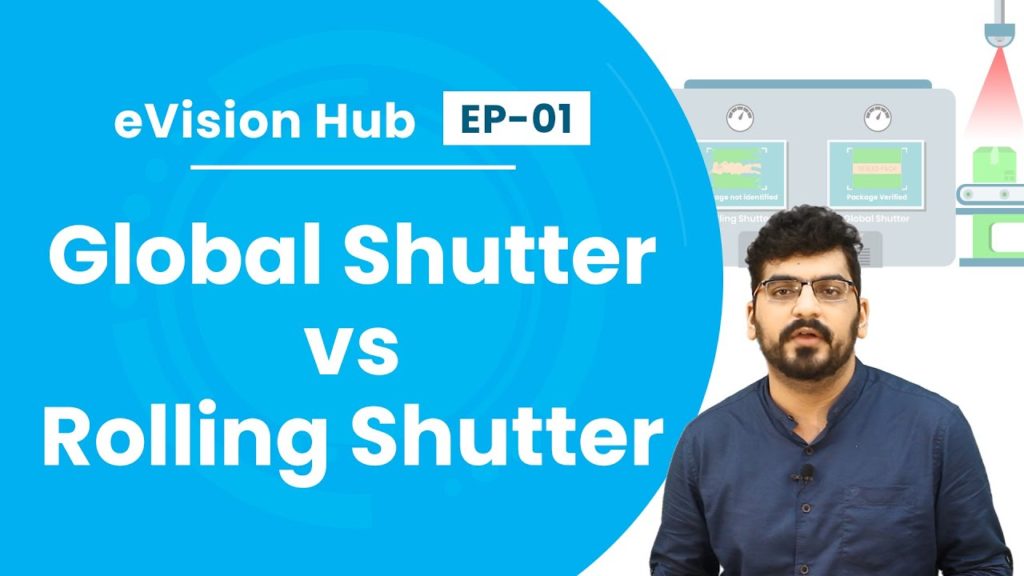This blog post was originally published at e-con Systems’ website. It is reprinted here with the permission of e-con Systems.
Are you wondering how to choose between Rolling shutter and Global shutter for your application? Then, read this article to better understand the differences between rolling shutter and global shutter and how to choose the one that perfectly fits your application.
Today’s industrial cameras and imaging systems have sensors that capture and record images for various processing and analysis purposes. These sensors use an electronic shutter to capture images. An electronic shutter is a device that controls the exposure of photon wells on the sensor. It also determines whether the pixels are exposed line by line or as a complete matrix. The two main types of electronic shutter are Rolling shutter and Global shutter. This article explores shutter mechanisms, the difference between the two shutters, and where to use them.
For better understanding of the details discussed in this article, the following terms need to be understood.
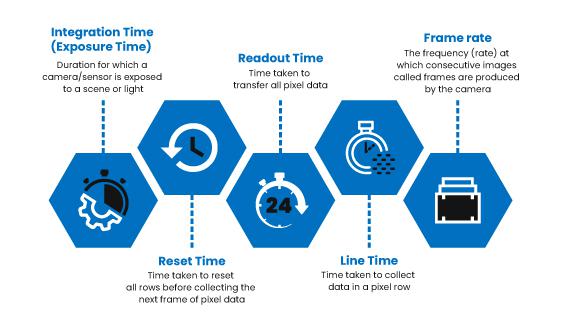
What is Rolling shutter?
Rolling shutter mode in a camera exposes the pixel rows one after the other, with a temporal offset from one row to the next. At first, the top row of the image starts collecting the light and finishes it. Then the next row starts collecting light. This causes delay in the ending and starting time of light collection for consecutive rows. The total light collection time for each row is exactly the same.
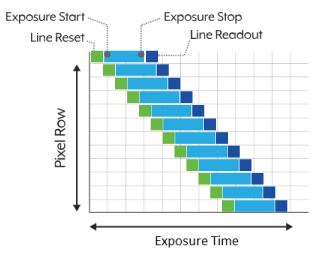
To give a perspective, in a rolling shutter for a 640 x 480 resolution image, the topmost of 480 pixel rows is exposed first followed by the consecutive rows.
Rolling Shutter Effect
The difference in imaging between rolling shutter sensor and global shutter sensor is predominantly reflected in dynamic image acquisition. When fast-moving objects are captured by a rolling shutter sensor, the rolling shutter Effect occurs. In rolling shutter, all pixels of the array in the image sensor are not exposed simultaneously and each row of sensor pixels is scanned sequentially. Due to this, if an object moves faster than the exposure time and readout time of the image sensor, the image gets distorted owing to rolling light exposure. This is called rolling shutter effect.
Rolling shutter effect when capturing rotating objects
While capturing high-speed rotating objects in rolling shutter mode, distortion and shutter artifacts occur easily as shown in the image below.
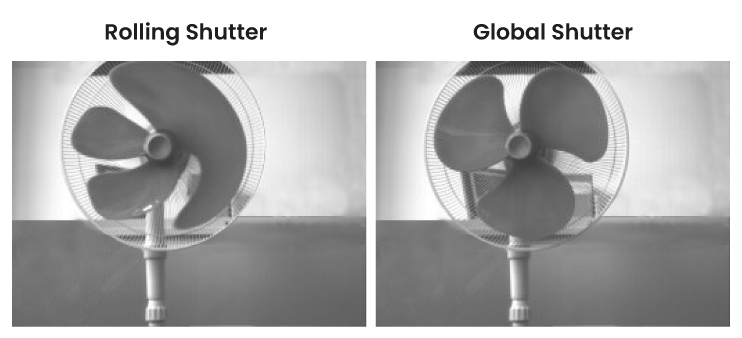
In the above comparison, the image taken in global shutter mode captures the shape of the fan blade perfectly, while it is deformed in rolling shutter mode.
Rolling shutter effect when capturing Linear Moving Objects
In rolling shutter mode, distortion and shutter artifacts occur when capturing high-speed moving objects as shown in the image below.
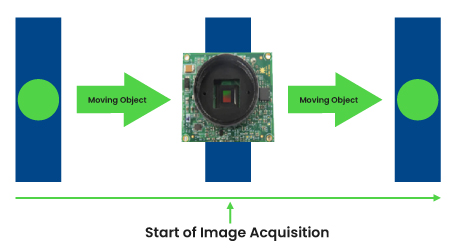
In the above comparision, the object moving in linear direction from left to right captured at Global shutter mode restore the shape of the object perfectly. The image captured at rolling shutter mode creates rolling shutter effects in the form of horizontal blur.
What is Global Shutter?
Global shutter mode in an image sensor allows all the sensor’s pixels to start exposing and stop exposing simultaneously for the programmed exposure period during every image acquisition. After the end of the exposure time, pixel data readout begins and proceeds row by row until all pixel data has been read. This produces non-distorted images without wobble or skewing. Global shutter sensors are typically used to capture high-speed moving objects.
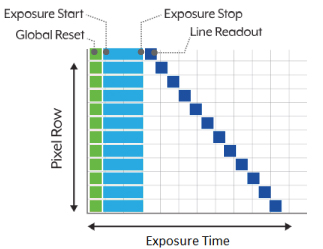
To give a perspective,a 640 x 480 resolution image is taken. When it’s exposed to global shutter, all the 307200 (640 x 480) sensor pixels are exposed simultaneously for the programmed exposure period.
Global shutter is capable of avoiding rolling shutter artifact alone, and not motion blur caused due to fast-moving object and exposure. Only at lower exposure levels, global shutter helps to capture sharp images of moving objects without any motion blur. But with rolling shutter, regardless of low exposure values, images produced will remain skewed owing to rolling shutter artifact.
Advantages and Disadvantages of Global shutter and Rolling shutter
| Shutter Mode | Advantage | Disadvantage |
| Global Shutter | Well suited for capturing fast-moving objects | Higher ambient noise, sensor cost is high |
| Rolling Shutter | Lower ambient noise, sensor cost is low | Image distortion can occur for every fast-moving object captured. |
Where we need a global shutter camera and rolling shutter camera?
A global shutter camera is mainly used for capturing high-speed moving objects without artifacts and motion blur. Global shutter cameras are used in applications such as ball tracking, industrial automation, warehouse robots, drones etc.
Rolling shutter sensors offer excellent sensitivity for imaging and can be used for cost effective applications. It is predominantly used for capturing slow-moving objects such as agriculture tractors, slow speed conveyors, and standalone applications like kiosks, barcode scanners, etc.
Global shutter cameras and rolling shutter cameras from e-con Systems
Global Shutter Cameras
- See3CAM_24CUG – Full HD Color Global Shutter Camera
- See3CAM_20CUG – 2MP Global Shutter Monochrome Camera
- See3CAM_10CUG – 1.3 MP Global Shutter USB3 camera
Rolling Shutter Cameras
- See3CAM_CU135 – 13MP 4K USB camera
- See3CAM_CU55 – 5MP Low Noise USB3 Camera
- See3CAM_CU30 – 3.4 MP Low Light USB camera
- See3CAM_CU20 – Full HD HDR USB camera
Interested in knowing more about our camera solutions? Write to our camera solutions experts [email protected]!

